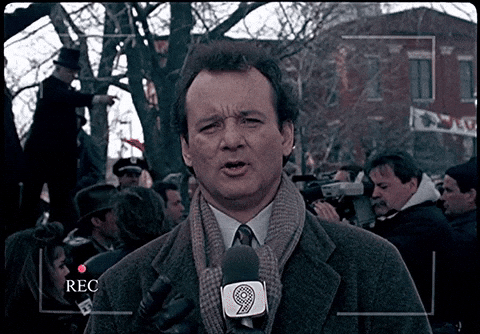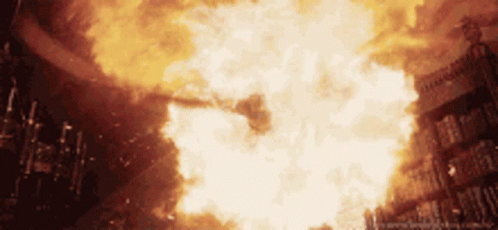This week’s Thursday Thought is dedicated to Ian Morrison, rest in peace Ian!
The Phoenix is one of the most enduring symbols of renewal, resilience, and reinvention. According to ancient myth, this magnificent bird, after living for centuries, builds its own funeral pyre and willing walks into the flames, burns itself up and from the ashes gathers what is still useful from its previous incarnation. The cycle repeats every 500 years, signifying an eternal process of willing destruction and rebirth.

The lesson? Reinvention is not a one-time event but an ongoing necessity. It is not about reaching a final destination but embracing transformation as a way of being. This is the difference between those organizations and individuals who endure and those who fade away. Organizations that view reinvention as a singular act — an endpoint — are destined to stagnate. Those that embrace reinvention as an odyssey rather than a journey will continue to thrive, no matter how many times they must rise from the ashes.
Innovation vs. Reinvention: A Critical Difference

Innovation and reinvention are often used interchangeably, but they are fundamentally different concepts.
Innovation is about creating something new — whether it be a product, a service, or a business model. Radical innovation is to build something from scratch with no legacy to protect. Meanwhile, Incremental innovation slightly improves or optimizes what already exists.
Reinvention, on the other hand, is about changing at the core. It is the ability to rethink not just what you do, but who you are as an organization or even reimagine your industry.
Innovation is necessary, but without reinvention, even the most groundbreaking strategies decay over time. The greatest challenge for any company is not just innovating once but staying adaptable enough to continually renew. There is no endowment to the past. As Paul Nunes, the late Ian Morrison and I discusses on The Innovation Show, companies often remain tethered to past successes, reluctant to move forward.
One of the biggest challenges in reinvention is knowing when to walk into the flames. Many organizations resist. I always think — perhaps in my childishness — of scripting a humorous episode of Family Guy, where the Phoenix is at the end of its life cycle and her friend reminds her it is time to step into the fire. But the Phoenix, out celebrating her last night of this current incarnation, hesitates, saying, “Just one more drink!” That reluctant Phoenix reminds me of many organizations today — delaying reinvention, clinging to the old order or the leader just waiting for her retirement.
This links nicely to S-curve jumps — companies like Netflix knew when to pivot, others, like Nokia, escalated commitment, holding onto legacy models because they had invested so heavily in past success. Nokia owned factories for feature phones, making it financially difficult to reinvent and shift fully into smartphones. Their reluctance to let go of the first curve hindered their ability to embrace the next.
Volvo’s Gut Wrenching Decision

“It can be done, but the attachment to the old core technology — to film as opposed to digital photography — is so emotional and powerful, difficult for folk.” — Ian Morrison
Ian’s words perfectly capture the struggle of reinvention. The emotional and financial ties to past successes can be the very chains that prevent necessary transformation. Organizations must recognize when to let go, when to walk into the flames, and when to rise again.
This is exactly what happened with Volvo, as Ian shared with us. Volvo made the wrenching decision to double down on trucks and buses while selling off its car division, a move that was gut-wrenching for many Swedes. While their rational strategy aligned with globalization and new satellite-enabled services for trucks, many executives felt emotional guilt about abandoning Volvo cars, a Swedish icon. Some even attempted to reclaim the car business later. This illustrates the real challenge of reinvention — it’s not just financial, but deeply cultural and emotional.
As Paul Nunes emphasized, true strategy must involve asset reallocation. It’s not enough to just talk about reinvention — leaders must put their money where their mouth is, diverting resources to the next wave rather than clinging to past successes. Volvo walked into the flames, albeit with resistance, and bet on its future.
The Phoenix in Flight: The University of Phoenix

“Renewal can’t depend on a single individual having a second epiphany; rather the capacity for renewal must be baked deeply into the organization — into its attitudes, values, processes and systems.” — Gary Hamel
The University of Phoenix was once an industry disruptor. Founded in 1976, it redefined higher education by catering to working adults — a market largely ignored by traditional universities. With a focus on accessibility, flexible schedules, and an alternative learning model, at one stage it became the largest for-profit university in America, with campuses across the states, Puerto Rico, and Canada.
After recognizing the shift toward digital learning, it reinvented into online education. In 1994, UoPX leaders made the parent company, Apollo Group, public. Its enrollment exceeded 100,000 students by 1999. At its peak Apollo Group was worth billions.
But reinvention is not a single journey, there is no safe haven — it’s an odyssey. The University of Phoenix, after years of success, faced declining enrollment and reputational issues. Lawsuits and regulatory scrutiny threatened its very existence. In 2007, The New York Times reported that the school’s graduation rate had plummeted and that educational quality had eroded. Now, it must once again rise from the ashes — this time not just through a market shift, but through deep-rooted change. Survival depends not on innovation alone, but on its willingness to completely reinvent itself.
The Danger of Becoming an Industry Footnote

Starting this week, we begin an 8-month project with Gary Hamel, where we explore all his work covering every one of his books and each of his articles. In Leading the Revolution, Gary identified two kinds of companies that fail:
Slow-moving incumbents who reinvent themselves only under duress, typically too late to lead real change.
One-strategy wonders who successfully disrupt an industry once, but never reinvent themselves again. Their success locks them into an identity they cannot escape, leading to strategy decay.
He warned:
“Companies that are incapable of leading an industry revolution are often slow-moving incumbents caught in perpetual catch-up mode. All too often, incumbents reinvent their strategies only under duress — when it becomes patently and painfully obvious that they’ve missed a critical opportunity. When they finally get around to the challenge of renewal, they do little more than ape the strategies of less orthodox competitors. However successful the ensuing makeover, top management deserves little credit, and even less recompense, for tagging along at the end of someone else’s revolutionary parade.
On the other hand, the world is filled with one-strategy wonders — industry revolutionaries that were capable of changing an industry but have yet to demonstrate that they are capable of changing themselves. Even the most brilliant strategy loses its economic effectiveness over time — this is the process of strategy decay. Any company that can’t uncouple its long-term sense of identity from its initial strategy will end up as an industry footnote.”
This is the real lesson of the Phoenix: reinvention is not a single event, but a cycle that must repeat, again and again. Organizations that fail to understand this will eventually perish. The ability to disrupt an industry is impressive — but the ability to disrupt oneself is the true hallmark of longevity.
So ask yourself: is your organization on a journey to a fixed endpoint, or is it on an odyssey of continual reinvention? The answer will determine whether you rise or fall with the next wave of change.
The First episode of Innovation Show X, where two previous guests of the Innovation Show join us to discuss a common intersection of their work. Episode one featured my friend and author of “Jumping The S Curve” Paul Nunes and author of “The Second Curve” the late Ian Morrison, R.I.P.
https://medium.com/media/b15a6209fbbf5428ba4e8a3439f35627/href
The Phoenix and the Odyssey of Perpetual Reinvention was originally published in The Thursday Thought on Medium, where people are continuing the conversation by highlighting and responding to this story.